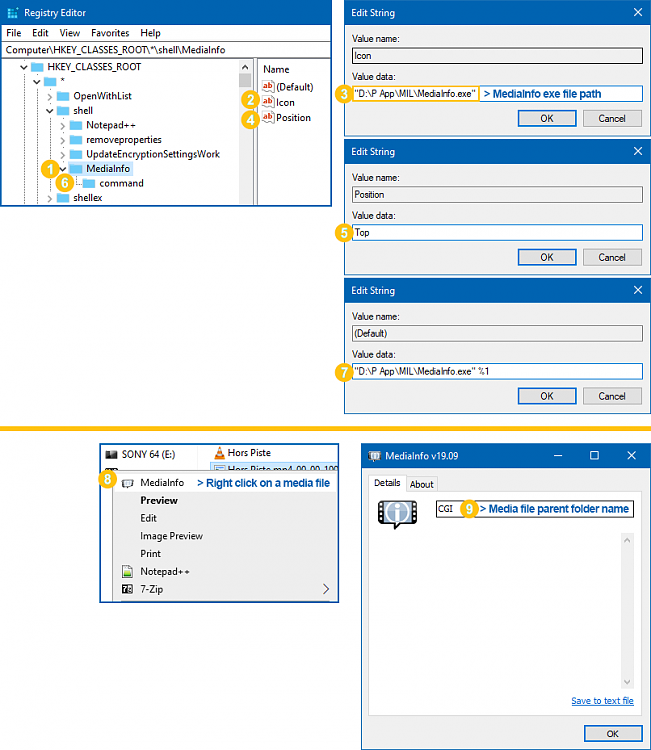
- #Uninstall MediaInfo Lite mac os x#
- #Uninstall MediaInfo Lite full#
- #Uninstall MediaInfo Lite software#
You should also be aware that removing an unbundled application by moving it into the Trash leave behind some of its components on your Mac. Mac users can easily drag any unwanted application to the Trash and then the removal process is started.

Thus, different from the program uninstall method of using the control panel in Windows,
#Uninstall MediaInfo Lite mac os x#
Most applications in Mac OS X are bundles that contain all, or at least most, of the files needed to run the application, that is to say, Manually uninstall Media-Info 1.2 step by step: Continue reading this article to learn about the proper methods for uninstalling Media-Info 1.2. Removing all its components is highly necessary.
#Uninstall MediaInfo Lite full#
But if you are trying to uninstall Media-Info 1.2 in full and free up your disk space, The settings of this program still be kept. Still remains on the hard drive after you delete Media-Info 1.2 from the Application folder, in case that the next time you decide to reinstall it, Generally, its additional files, such as preference files and application support files, When installed, Media-Info 1.2 creates files in several locations. Instead of installing it by dragging its icon to the Application folder, uninstalling Media-Info 1.2 may need you to do more than a simple drag-and-drop to the Trash. Media-Info 1.2 is a third party application that provides additional functionality to OS X system and enjoys a popularity among Mac users.
#Uninstall MediaInfo Lite software#
Unlike the software developed for Windows system, most of the applications installed in Mac OS X generally can be removed with relative ease. Usually commercial software or games are produced for sale or to serve a commercial purpose.How to Uninstall Media-Info 1.2 Application/Software on Your Mac Even though, most trial software products are only time-limited some also have feature limitations. After that trial period (usually 15 to 90 days) the user can decide whether to buy the software or not. Trial software allows the user to evaluate the software for a limited amount of time. Demos are usually not time-limited (like Trial software) but the functionality is limited. In some cases, all the functionality is disabled until the license is purchased. Demoĭemo programs have a limited functionality for free, but charge for an advanced set of features or for the removal of advertisements from the program's interfaces. In some cases, ads may be show to the users. Basically, a product is offered Free to Play (Freemium) and the user can decide if he wants to pay the money (Premium) for additional features, services, virtual or physical goods that expand the functionality of the game. This license is commonly used for video games and it allows users to download and play the game for free.

There are many different open source licenses but they all must comply with the Open Source Definition - in brief: the software can be freely used, modified and shared. Programs released under this license can be used at no cost for both personal and commercial purposes. Open Source software is software with source code that anyone can inspect, modify or enhance. Freeware products can be used free of charge for both personal and professional (commercial use). Freeware programs can be downloaded used free of charge and without any time limitations.


 0 kommentar(er)
0 kommentar(er)
